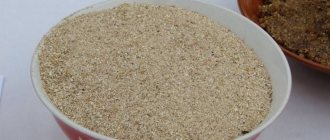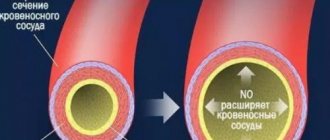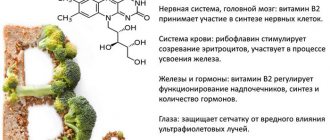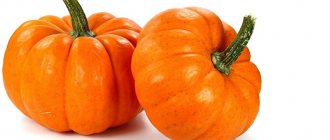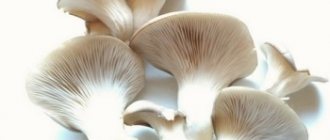Pesto sauce ingredients
| Olive oil | 63 g |
| Basil, fresh | 54 g |
| Table salt | 3 g |
| Cashew | 40 g |
| Pine nut | 20 g |
grind ingredients, mix
Nutritional value and chemical composition of pesto sauce.
| Nutrient | Quantity | Norm** | % of the norm in 100 g | % of the norm in 100 kcal | 100% normal |
| Calorie content | 529 kcal | 1684 kcal | 31.4% | 5.9% | 318 g |
| Squirrels | 7 g | 76 g | 9.2% | 1.7% | 1086 g |
| Fats | 53 g | 56 g | 94.6% | 17.9% | 106 g |
| Carbohydrates | 7 g | 219 g | 3.2% | 0.6% | 3129 g |
| Alimentary fiber | 1 g | 20 g | 5% | 0.9% | 2000 g |
| Water | 29 g | 2273 g | 1.3% | 0.2% | 7838 g |
| Vitamins | |||||
| Vitamin A, RE | 79.3 mcg | 900 mcg | 8.8% | 1.7% | 1135 g |
| beta carotene | 0.944 mg | 5 mg | 18.9% | 3.6% | 530 g |
| Vitamin B1, thiamine | 0.162 mg | 1.5 mg | 10.8% | 2% | 926 g |
| Vitamin B2, riboflavin | 0.097 mg | 1.8 mg | 5.4% | 1% | 1856 |
| Vitamin B4, choline | 3.42 mg | 500 mg | 0.7% | 0.1% | 14620 g |
| Vitamin B5, pantothenic | 0.097 mg | 5 mg | 1.9% | 0.4% | 5155 g |
| Vitamin B6, pyridoxine | 0.057 mg | 2 mg | 2.9% | 0.5% | 3509 g |
| Vitamin B9, folates | 24.178 mcg | 400 mcg | 6% | 1.1% | 1654 g |
| Vitamin C, ascorbic acid | 5.49 mg | 90 mg | 6.1% | 1.2% | 1639 g |
| Vitamin E, alpha tocopherol, TE | 6.778 mg | 15 mg | 45.2% | 8.5% | 221 g |
| Vitamin K, phylloquinone | 130.4 mcg | 120 mcg | 108.7% | 20.5% | 92 g |
| Vitamin RR, NE | 2.2914 mg | 20 mg | 11.5% | 2.2% | 873 g |
| Macronutrients | |||||
| Potassium, K | 277.86 mg | 2500 mg | 11.1% | 2.1% | 900 g |
| Calcium, Ca | 65.94 mg | 1000 mg | 6.6% | 1.2% | 1517 g |
| Magnesium, Mg | 107.11 mg | 400 mg | 26.8% | 5.1% | 373 g |
| Sodium, Na | 650.94 mg | 1300 mg | 50.1% | 9.5% | 200 g |
| Phosphorus, P | 127.2 mg | 800 mg | 15.9% | 3% | 629 g |
| Microelements | |||||
| Iron, Fe | 2.555 mg | 18 mg | 14.2% | 2.7% | 705 g |
| Manganese, Mn | 1.3241 mg | 2 mg | 66.2% | 12.5% | 151 g |
| Copper, Cu | 263.11 mcg | 1000 mcg | 26.3% | 5% | 380 g |
| Selenium, Se | 0.169 mcg | 55 mcg | 0.3% | 0.1% | 32544 g |
| Fluorine, F | 0.03 mcg | 4000 mcg | 13333333 g | ||
| Zinc, Zn | 0.7202 mg | 12 mg | 6% | 1.1% | 1666 g |
The energy value of pesto sauce is 529 kcal.
Primary Source: Created in the application by the user. Read more.
** This table shows the average levels of vitamins and minerals for an adult. If you want to know the norms taking into account your gender, age and other factors, then use the “My Healthy Diet” application.
Manufacturing Features
It is known that sauce can elevate any dish to a new level. Pesto is easy to prepare. The recipe is used by both professionals and inexperienced cooks.
We recommend reading: The benefits and harms of cardamom
The method of producing the famous composition depends on its variety. To get the classic version you need:
- Peel and then chop the garlic.
- Wash the basil greens, dry them and chop finely.
- Grate Parmesan on a coarse grater.
- Add pine nuts to the mixture, then grind in a mortar or blender, add olive oil.
Pesto sauce is stored in the refrigerator
Important! The product is placed in glass containers.
Using pesto sauce
Initially, the product was used as a means of folk therapy. Gradually, the mass representing the sauce began to be actively used for culinary purposes. Pesto is consumed all over the world. The universal composition is added to appetizers, soups, salads, fish, meat dishes, and vegetables. It gives a bright and rich taste.
Ingredients Pesto Sauce
| Basil, fresh | 100 g |
| Pine nut | 70 g |
| Cheese, parmesan, hard | 50 g |
| Olive oil | 50 g |
| Garlic bulb | 30 g |
| Table salt | 3 g |
Nutritional value and chemical composition of Pesto Sauce.
| Nutrient | Quantity | Norm** | % of the norm in 100 g | % of the norm in 100 kcal | 100% normal |
| Calorie content | 390.7 kcal | 1684 kcal | 23.2% | 5.9% | 431 g |
| Squirrels | 10.7 g | 76 g | 14.1% | 3.6% | 710 g |
| Fats | 36.8 g | 56 g | 65.7% | 16.8% | 152 g |
| Carbohydrates | 7.4 g | 219 g | 3.4% | 0.9% | 2959 g |
| Alimentary fiber | 1.5 g | 20 g | 7.5% | 1.9% | 1333 g |
| Water | 42 g | 2273 g | 1.8% | 0.5% | 5412 g |
| Vitamins | |||||
| Vitamin A, RE | 121.5 mcg | 900 mcg | 13.5% | 3.5% | 741 g |
| beta carotene | 1.052 mg | 5 mg | 21% | 5.4% | 475 g |
| Vitamin B1, thiamine | 0.11 mg | 1.5 mg | 7.3% | 1.9% | 1364 g |
| Vitamin B2, riboflavin | 0.14 mg | 1.8 mg | 7.8% | 2% | 1286 g |
| Vitamin B4, choline | 8.6 mg | 500 mg | 1.7% | 0.4% | 5814 g |
| Vitamin B5, pantothenic | 0.275 mg | 5 mg | 5.5% | 1.4% | 1818 |
| Vitamin B6, pyridoxine | 0.147 mg | 2 mg | 7.4% | 1.9% | 1361 g |
| Vitamin B9, folates | 31.749 mcg | 400 mcg | 7.9% | 2% | 1260 g |
| Vitamin B12, cobalamin | 0.198 mcg | 3 mcg | 6.6% | 1.7% | 1515 g |
| Vitamin C, ascorbic acid | 7.12 mg | 90 mg | 7.9% | 2% | 1264 g |
| Vitamin D, calciferol | 0.083 mcg | 10 mcg | 0.8% | 0.2% | 12048 g |
| Vitamin E, alpha tocopherol, TE | 4.482 mg | 15 mg | 29.9% | 7.7% | 335 g |
| Vitamin K, phylloquinone | 149.8 mcg | 120 mcg | 124.8% | 31.9% | 80 g |
| Vitamin RR, NE | 1.6331 mg | 20 mg | 8.2% | 2.1% | 1225 g |
| Macronutrients | |||||
| Potassium, K | 276.29 mg | 2500 mg | 11.1% | 2.8% | 905 g |
| Calcium, Ca | 279.42 mg | 1000 mg | 27.9% | 7.1% | 358 g |
| Magnesium, Mg | 89.56 mg | 400 mg | 22.4% | 5.7% | 447 g |
| Sodium, Na | 651.09 mg | 1300 mg | 50.1% | 12.8% | 200 g |
| Sera, S | 71.17 mg | 1000 mg | 7.1% | 1.8% | 1405 g |
| Phosphorus, P | 276.8 mg | 800 mg | 34.6% | 8.9% | 289 g |
| Chlorine, Cl | 593.96 mg | 2300 mg | 25.8% | 6.6% | 387 g |
| Microelements | |||||
| Iron, Fe | 2.702 mg | 18 mg | 15% | 3.8% | 666 g |
| Yod, I | 0.89 mcg | 150 mcg | 0.6% | 0.2% | 16854 g |
| Cobalt, Co | 1.04 mcg | 10 mcg | 10.4% | 2.7% | 962 g |
| Manganese, Mn | 2.4983 mg | 2 mg | 124.9% | 32% | 80 g |
| Copper, Cu | 453.77 mcg | 1000 mcg | 45.4% | 11.6% | 220 g |
| Molybdenum, Mo | 1.089 mcg | 70 mcg | 1.6% | 0.4% | 6428 g |
| Selenium, Se | 5.38 mcg | 55 mcg | 9.8% | 2.5% | 1022 g |
| Zinc, Zn | 1.8168 mg | 12 mg | 15.1% | 3.9% | 661 g |
| Sterols (sterols) | |||||
| Cholesterol | 11.2 mg | max 300 mg |
The energy value of Pesto Sauce is 390.7 kcal.
Primary Source: Created in the application by the user. Read more.
** This table shows the average levels of vitamins and minerals for an adult. If you want to know the norms taking into account your gender, age and other factors, then use the “My Healthy Diet” application.
Origin story
The first mention of the product dates back to the 19th century. Pesto can be found in a cookbook. According to the classic recipe, the product was prepared in a mortar. Grind with a pestle:
- pine pine seeds;
- basil leaves;
- garlic;
- hard cheese;
- olive oil;
- salt.
In the modern version, pine nuts are used instead of pine seeds. The composition has a rich green color and a special aroma. Pesto is added to fish, seafood, risotto, lasagna, pizza and spaghetti. They season salads and also marinate meat.
Important! “Pestare” is translated from Italian as pressing, pounding or grinding. The most famous varieties of pesto are purple, yellow and red.
There are several versions of the origin of the product. There is an opinion that pounding basil leaves in a mortar began in the Liguri tribe, whose people inhabited the territory of Northwestern Italy. The prototype of pesto is also called the garlic sauce invented by the Genoese.
An ointment based on basil and olive oil has been successfully used as a topical treatment for eczema. Over time, the taste properties of the product were appreciated, which contributed to its transition into Ligurian cuisine.
Ingredients Pesto Sauce
| Basil, fresh | 97 g |
| Parsley | 48 g |
| Dutch cheese, block | 100 g |
| Garlic bulb | 30 g |
| Sunflower oil | 50 g |
Nutritional value and chemical composition of Pesto Sauce.
| Nutrient | Quantity | Norm** | % of the norm in 100 g | % of the norm in 100 kcal | 100% normal |
| Calorie content | 273.9 kcal | 1684 kcal | 16.3% | 6% | 615 g |
| Squirrels | 10.2 g | 76 g | 13.4% | 4.9% | 745 g |
| Fats | 23.9 g | 56 g | 42.7% | 15.6% | 234 g |
| Carbohydrates | 4.7 g | 219 g | 2.1% | 0.8% | 4660 g |
| Organic acids | 0.6 g | ||||
| Alimentary fiber | 0.9 g | 20 g | 4.5% | 1.6% | 2222 g |
| Water | 58 g | 2273 g | 2.6% | 0.9% | 3919 g |
| Vitamins | |||||
| Vitamin A, RE | 292.3 mcg | 900 mcg | 32.5% | 11.9% | 308 g |
| beta carotene | 1.832 mg | 5 mg | 36.6% | 13.4% | 273 g |
| Vitamin B1, thiamine | 0.034 mg | 1.5 mg | 2.3% | 0.8% | 4412 g |
| Vitamin B2, riboflavin | 0.154 mg | 1.8 mg | 8.6% | 3.1% | 1169 g |
| Vitamin B4, choline | 7.43 mg | 500 mg | 1.5% | 0.5% | 6729 g |
| Vitamin B5, pantothenic | 0.217 mg | 5 mg | 4.3% | 1.6% | 2304 g |
| Vitamin B6, pyridoxine | 0.162 mg | 2 mg | 8.1% | 3% | 1235 g |
| Vitamin B9, folates | 40.203 mcg | 400 mcg | 10.1% | 3.7% | 995 g |
| Vitamin B12, cobalamin | 0.351 mcg | 3 mcg | 11.7% | 4.3% | 855 g |
| Vitamin C, ascorbic acid | 28.66 mg | 90 mg | 31.8% | 11.6% | 314 g |
| Vitamin D, calciferol | 0.265 mcg | 10 mcg | 2.7% | 1% | 3774 g |
| Vitamin E, alpha tocopherol, TE | 7.425 mg | 15 mg | 49.5% | 18.1% | 202 g |
| Vitamin H, biotin | 0.767 mcg | 50 mcg | 1.5% | 0.5% | 6519 g |
| Vitamin K, phylloquinone | 366.2 mcg | 120 mcg | 305.2% | 111.4% | 33 g |
| Vitamin RR, NE | 2.8563 mg | 20 mg | 14.3% | 5.2% | 700 g |
| Macronutrients | |||||
| Potassium, K | 260.97 mg | 2500 mg | 10.4% | 3.8% | 958 g |
| Calcium, Ca | 413.32 mg | 1000 mg | 41.3% | 15.1% | 242 g |
| Magnesium, Mg | 51.35 mg | 400 mg | 12.8% | 4.7% | 779 g |
| Sodium, Na | 346.25 mg | 1300 mg | 26.6% | 9.7% | 375 g |
| Sera, S | 90.32 mg | 1000 mg | 9% | 3.3% | 1107 g |
| Phosphorus, P | 224.9 mg | 800 mg | 28.1% | 10.3% | 356 g |
| Chlorine, Cl | 2.77 mg | 2300 mg | 0.1% | 83032 g | |
| Microelements | |||||
| Iron, Fe | 1.581 mg | 18 mg | 8.8% | 3.2% | 1139 g |
| Yod, I | 0.83 mcg | 150 mcg | 0.6% | 0.2% | 18072 g |
| Cobalt, Co | 0.831 mcg | 10 mcg | 8.3% | 3% | 1203 g |
| Manganese, Mn | 0.4718 mg | 2 mg | 23.6% | 8.6% | 424 g |
| Copper, Cu | 176.61 mcg | 1000 mcg | 17.7% | 6.5% | 566 g |
| Selenium, Se | 1.415 mcg | 55 mcg | 2.6% | 0.9% | 3887 g |
| Zinc, Zn | 2.0324 mg | 12 mg | 16.9% | 6.2% | 590 g |
| Sterols (sterols) | |||||
| Cholesterol | 24.6 mg | max 300 mg |
The energy value of Pesto sauce is 273.9 kcal.
Primary Source: Created in the application by the user. Read more.
** This table shows the average levels of vitamins and minerals for an adult. If you want to know the norms taking into account your gender, age and other factors, then use the “My Healthy Diet” application.
Story
Despite the fact that Pesto is firmly rooted in Italian cuisine, its history began relatively recently. The first recipe for the sauce was published in the mid-19th century. The use of aromatic herbs in food is a practice that originated among the Ligurians in the Middle Ages. Wealthy people preferred exquisite spices, while poor people used herbs to hide the not-so-pleasant taste of their dishes - this tradition became the foundation for the creation of Basil Pesto.
The plant of Arabic origin has an interesting botanical name - Ocimum basilicum, which means “royal grass”.
First mention
Pesto was first mentioned by gastronomist Giovanni Battista Ratto in his book La Cuciniera genovese in 1870!
The recipe looked like this: “Take a clove of garlic, basil or, in the absence of this, marjoram and parsley, grate Dutch cheese and Parmesan and grind everything together in a mortar with a little oil until a paste is formed. Then dissolve it in more oil. This sauce is used to season lasagna and gnocchi, adding a little water without salt to make it thinner.” It is believed that this recipe is an evolution of the more ancient minced garlic sauce, used back in the 13th century.
Legend
But one cannot ignore the famous legend, according to which a monk who lived in the monastery of San Basilio collected the aromatic herb basilium, named after St. Basil, in the mountains. Grinding it in a mortar with other ingredients brought by the pilgrims, the ascetic received the first Pesto sauce.
During the 19th century, the recipe for Pesto sauce remained virtually unchanged and was very popular. But it is likely that the early version of the dish differed from the modern one in the large amount of garlic. This assumption is based on two reasons: the Arab-Persian influence on the cuisine of Genoa, which lasted until the beginning of the 20th century, as well as the abundance of garlic food in the diet of Ligurian sailors.
In fact, thanks to the sea, Pesto has gained great popularity in the world. From the port of Genoa, trade and passenger ships sailed to the countries most remote from Italy.
Kinds
Traditionally, when people say Pesto, they mean Genovese sauce. It invariably contains: basil, pine nuts, cheese (Parmesan or Grana Padano and Fiore Sardo), salt, garlic and olive oil. But in addition to the classic version, there are types of sauce created taking into account the tastes of various dishes. Often these pestos are prepared from products typical of the area of preparation.
Ligurian
Ligurian Pesto (Pesto ligure) is a traditional product (Prodotto Agroalimentare Tradizionale) of the Liguria region. It is made on the basis of Genoese basil (basilico genovese DOP) - a special type of aromatic herb with a more subtle taste compared to other varieties. Essentially, Ligurian Pesto is a copy of Genovese sauce with less stringent requirements for ingredients. Ideal for pasta and some bruschetta variations.
Trapanese
Pesto alla trapanese or agghiata trapanisa is a typical Sicilian product, the recipe of which has been passed down by local residents from generation to generation. It arose thanks to the Genoese sailors who “gave” their Pesto to the residents of the city of Trapani. The latter reworked the recipe, adding ingredients typical of their area, such as tomatoes, almonds and dried fruits. Pesto trapanese goes well with pasta due to its subtle tomato aroma.
Pesto from Gargano
The Pesto recipe, popular on the Gargano Peninsula, stands out among its counterparts in that it replaces basil with turnip tops. Additional ingredients: garlic, chili pepper and olive oil. This sauce is considered a universal seasoning and is used for different types of pasta.
Pistachio
Pistachio Pesto (Pesto di pistacchio) is a delicacy typical of the island of Sicily. For its preparation, pistachios di Bronte (DOP) are used, which are collected in the valley of the same name between the Etna volcano and the Monti Nebrodi mountains. Nuts (60-80% of the total components) are ground with salt, pepper and olive oil. The sauce has an exquisite rich taste and goes well with first courses, pasta and various types of canapés.
With Sicilian hazelnuts
Pesto with Sicilian hazelnuts (Pesto di nocciole siciliano) is a product of high gastronomy that can add an original flavor to first and second courses of both meat and fish. It is prepared by grinding hazelnuts and sunflower seeds with salt, pepper, nutmeg and olive oil.
Features of Pesto Genovese
Despite the fact that Pesto Genovese is not a DOP or IGP product, the preparation and sale of the sauce is controlled by strict regulations that protect it from counterfeiting. The rules regulate the choice, percentage of ingredients, and area of their production.
A product that does not meet all the requirements cannot be called Pesto Genovese. Sauce ingredients:
- Basil Genovese DOP (Basilico Genovese DOP) – at least 25% of the total number of components;
- Extra virgin olive oil produced in Italy;
- Parmigiano Reggiano DOP or Grana Padano DOP;
- Pecorino DOP (Pecorino);
- Garlic, pine nuts and sea salt;
- Walnuts may be added.
The garlic and sea salt, like the oil, must be produced in Italy. Walnuts – collected in the European Union. For pine nuts (cedar Pinus Pinea), the collection area has been expanded to the Mediterranean region.
Another important aspect is that the product should not be subjected to heat treatment. Pasteurization would certainly increase the shelf life of the sauce, but it negatively affects the quality. Therefore, Pesto Genovese is sold only chilled.
Finally, the final chord is preparing the dish. Real Genoese sauce is made by grinding it in a mortar. Electric mixers can heat up components. Iron blades of knives oxidize basil, which negatively affects the taste of the product.
Characteristic
Each batch of Pesto Genovese can vary in color from dark to light green depending on the color of the basil. The texture of the sauce is quite dense and homogeneous, determined by the percentage of olive oil.
The real highlight of Pesto is its aroma. It is strong and long-lasting, but at the same time very subtle thanks to the perfect combination of ingredients. Garlic notes come to the fore, which then dissolve into the enveloping scent of basil and cheese.
The taste sensations are first dominated by the presence of aged cheeses, then turning into the spiciness of garlic and basil.
What do they eat with?
Pesto Genovese is used to flavor first and second courses and various types of pasta and, above all, the famous trofie, typical of Liguria. As for drinks, it is worth noting that the product with garlic and basil “cannot tolerate” combination with red wine, which will acquire a bitter metallic taste. You should choose dry white wine. For example, Ligurian Pigato DOC.

